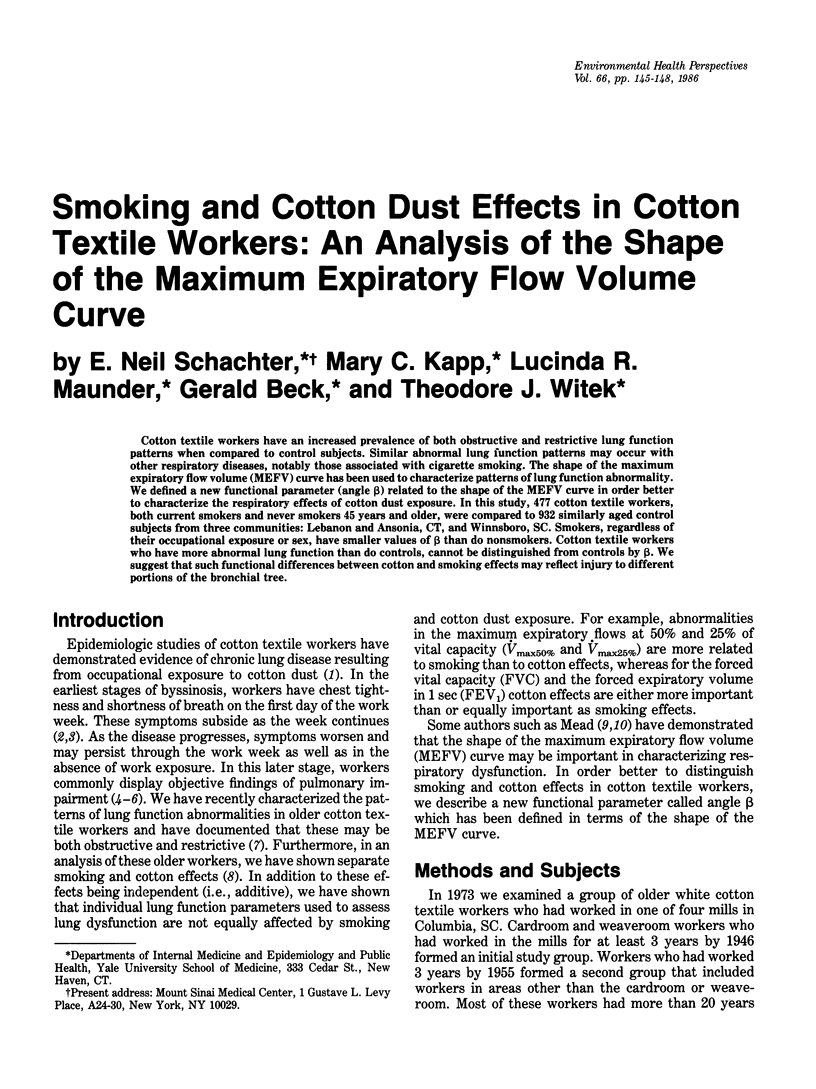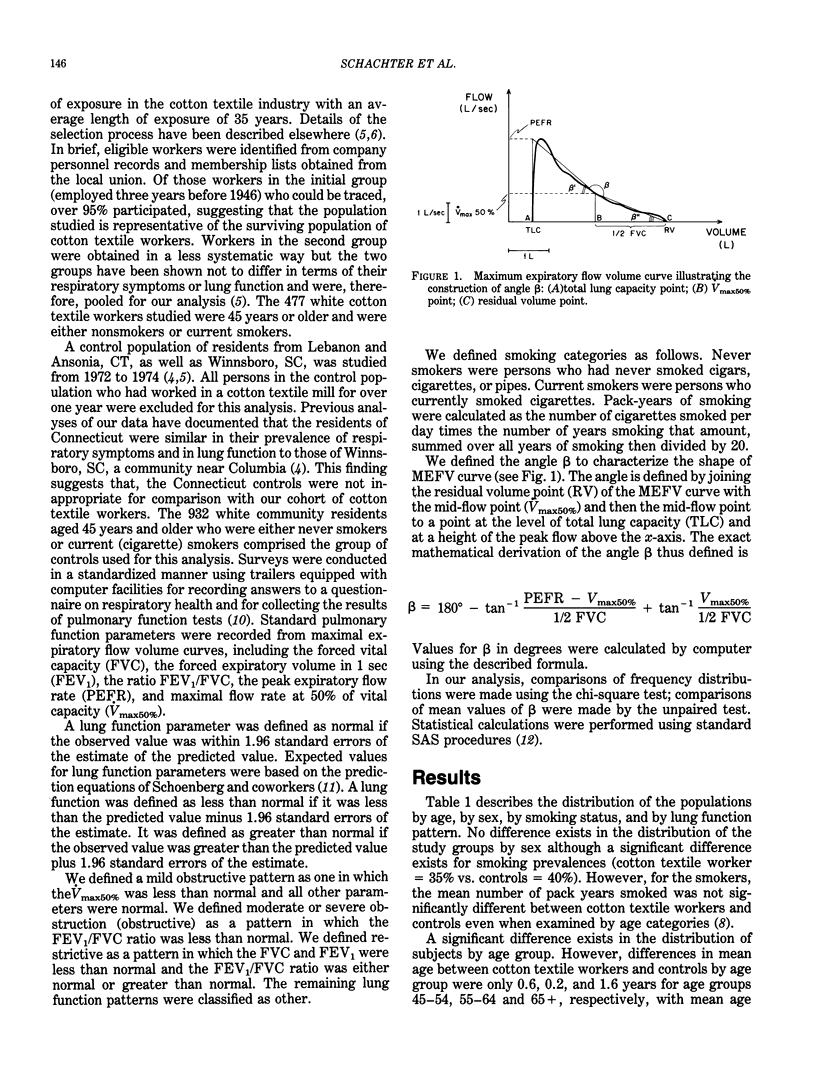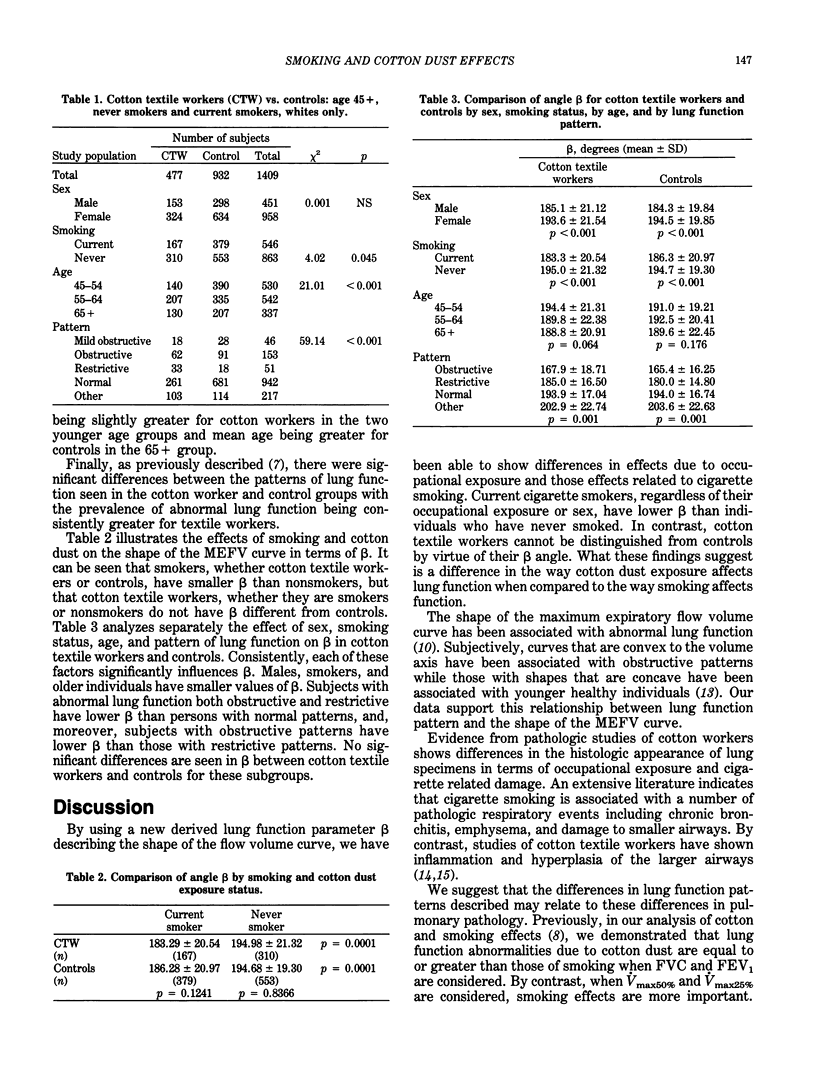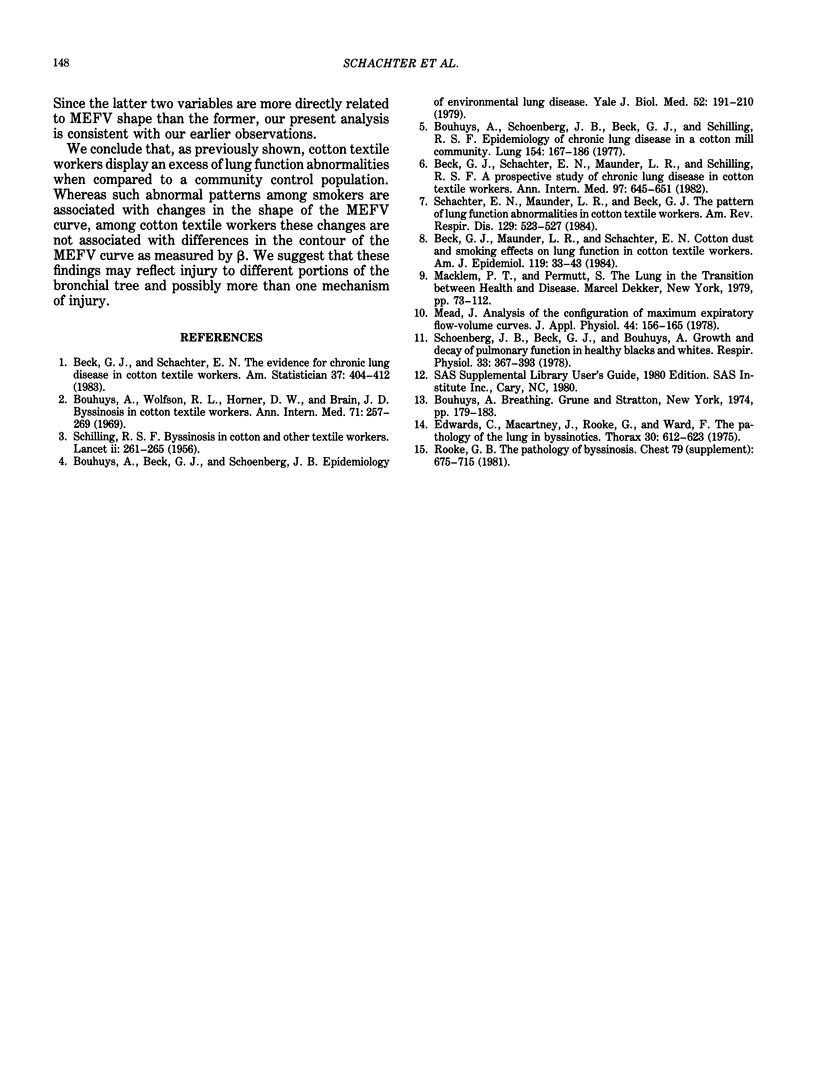Abstract
Cotton textile workers have an increased prevalence of both obstructive and restrictive lung function patterns when compared to control subjects. Similar abnormal lung function patterns may occur with other respiratory diseases, notably those associated with cigarette smoking. The shape of the maximum expiratory flow volume (MEFV) curve has been used to characterize patterns of lung function abnormality. We defined a new functional parameter (angle beta) related to the shape of the MEFV curve in order better to characterize the respiratory effects of cotton dust exposure. In this study, 477 cotton textile workers, both current smokers and never smokers 45 years and older, were compared to 932 similarly aged control subjects from three communities: Lebanon and Ansonia, CT, and Winnsboro, SC. Smokers, regardless of their occupational exposure of sex, have smaller values of beta than do nonsmokers. Cotton textile workers who have more abnormal lung function than do controls, cannot be distinguished from controls by beta. We suggest that such functional differences between cotton and smoking effects may reflect injury to different portions of the bronchial tree.
Full text
PDF



Selected References
These references are in PubMed. This may not be the complete list of references from this article.
- Beck G. J., Maunder L. R., Schachter E. N. Cotton dust and smoking effects on lung function in cotton textile workers. Am J Epidemiol. 1984 Jan;119(1):33–43. doi: 10.1093/oxfordjournals.aje.a113723. [DOI] [PubMed] [Google Scholar]
- Beck G. J., Schachter E. N., Maunder L. R., Schilling R. S. A prospective study of chronic lung disease in cotton textile workers. Ann Intern Med. 1982 Nov;97(5):645–651. doi: 10.7326/0003-4819-97-5-645. [DOI] [PubMed] [Google Scholar]
- Bouhuys A., Beck G. J., Schoenberg J. B. Epidemiology of environmental lung disease. Yale J Biol Med. 1979 Mar-Apr;52(2):191–210. [PMC free article] [PubMed] [Google Scholar]
- Bouhuys A., Schoenberg J. B., Beck G. J., Schilling R. S. Epidemiology of chronic lung disease in a cotton mill community. Lung. 1977;154(3):167–186. doi: 10.1007/BF02713532. [DOI] [PubMed] [Google Scholar]
- Bouhuys A., Wolfson R. L., Horner D. W., Brain J. D., Zuskin E. Byssinosis in cotton textile workers. Respiratory survey of a mill with rapid labor turnover. Ann Intern Med. 1969 Aug;71(2):257–269. doi: 10.7326/0003-4819-71-2-257. [DOI] [PubMed] [Google Scholar]
- Edwards C., Macartney J., Rooke G., Ward F. The pathology of the lung in byssinotics. Thorax. 1975 Dec;30(6):612–623. doi: 10.1136/thx.30.6.612. [DOI] [PMC free article] [PubMed] [Google Scholar]
- Mead J. Analysis of the configuration of maximum expiratory flow-volume curves. J Appl Physiol Respir Environ Exerc Physiol. 1978 Feb;44(2):156–165. doi: 10.1152/jappl.1978.44.2.156. [DOI] [PubMed] [Google Scholar]
- SCHILLING R. S. Byssinosis in cotton and other textile workers. Lancet. 1956 Aug 11;271(6937):261–contd. doi: 10.1016/s0140-6736(56)92077-3. [DOI] [PubMed] [Google Scholar]
- Schachter E. N., Maunder L. R., Beck G. J. The pattern of lung function abnormalities in cotton textile workers. Am Rev Respir Dis. 1984 Apr;129(4):523–527. [PubMed] [Google Scholar]
- Schoenberg J. B., Beck G. J., Bouhuys A. Growth and decay of pulmonary function in healthy blacks and whites. Respir Physiol. 1978 Jun;33(3):367–393. doi: 10.1016/0034-5687(78)90063-4. [DOI] [PubMed] [Google Scholar]


